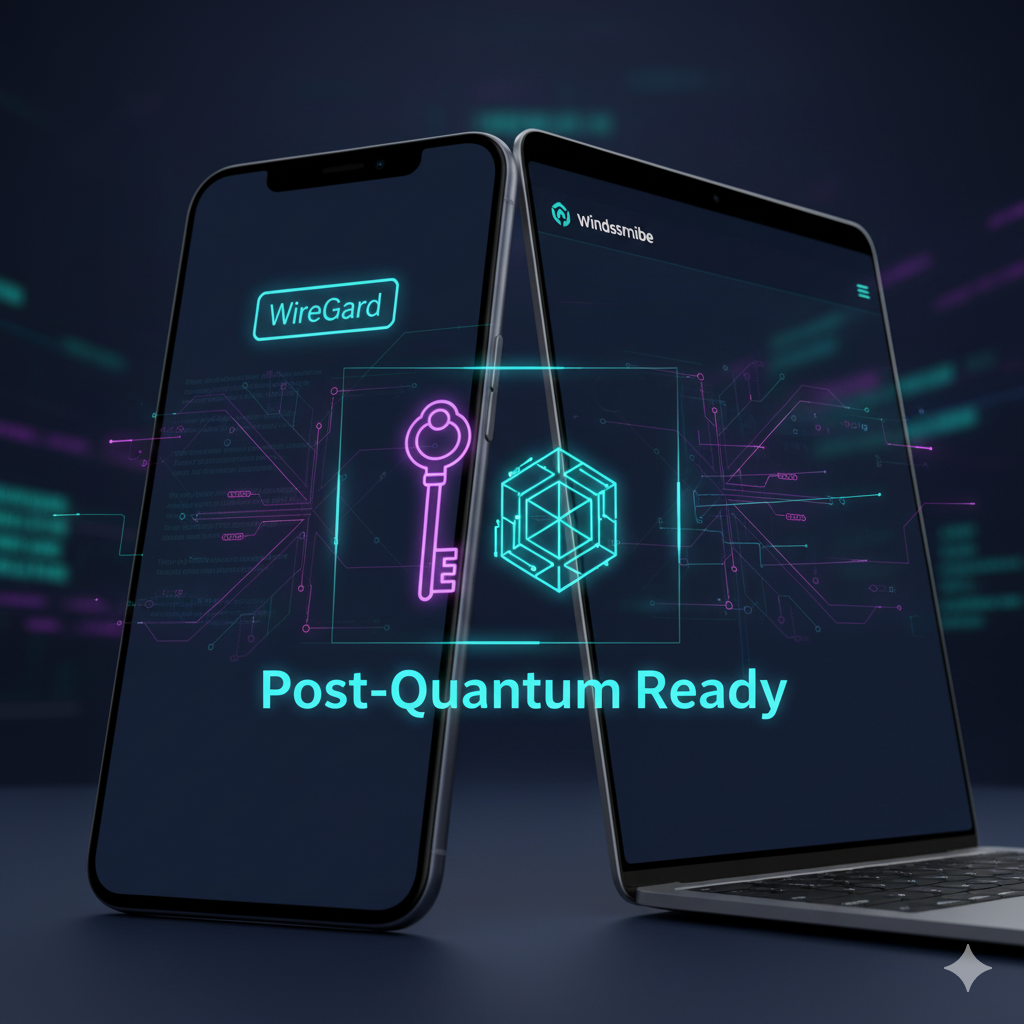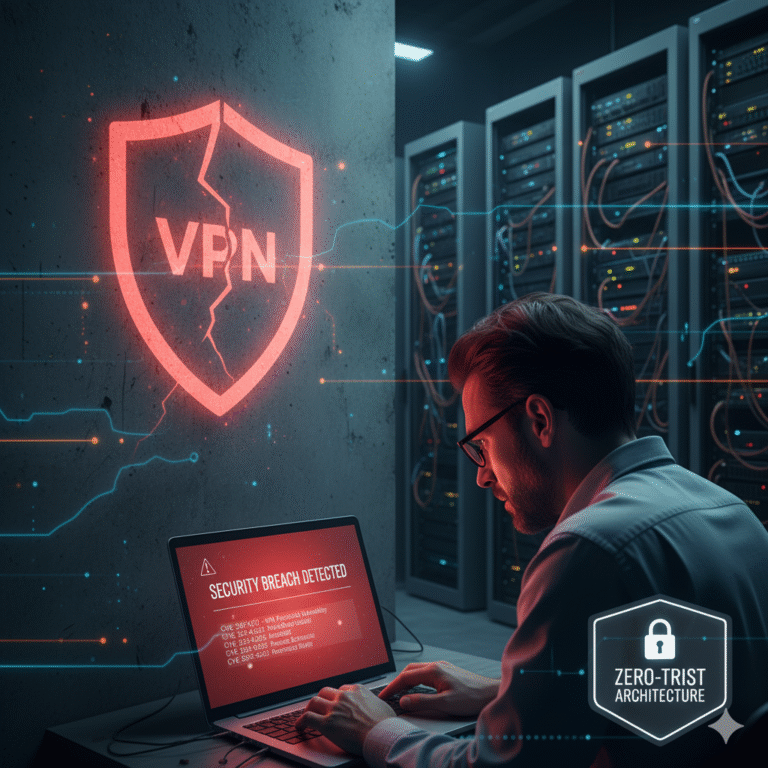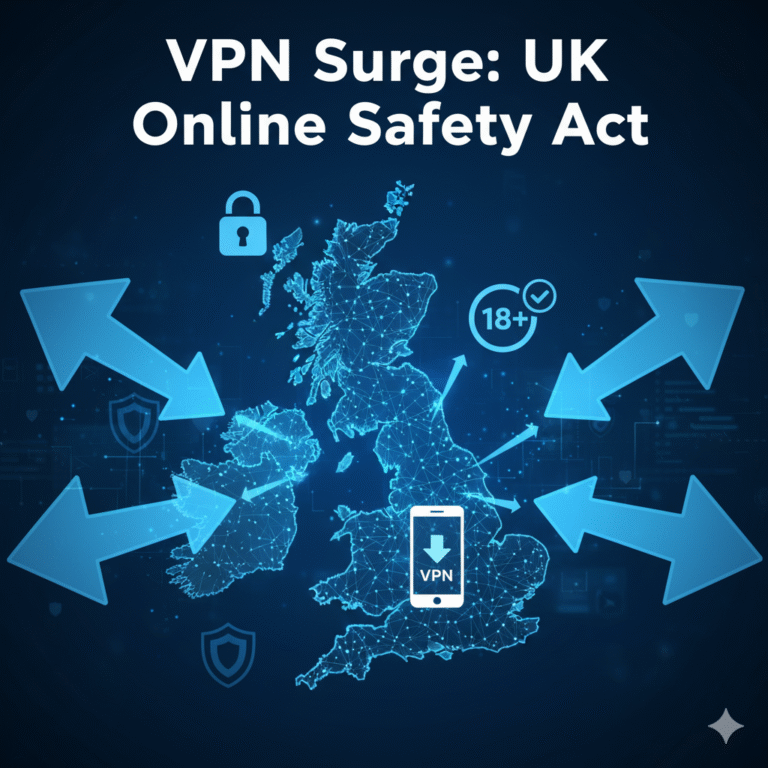Windscribe has rolled out post-quantum protections for its WireGuard implementation — a proactive step to defend VPN key exchanges against future quantum-computer attacks(Enterprise VPNs face) . The provider uses a hybrid approach that combines traditional X25519 key exchange with a post-quantum KEM inserted into WireGuard’s pre-shared key (PSK) mechanism, enabling “post-quantum WireGuard” for desktop and mobile users.
This article explains what Windscribe’s update means in plain terms, who benefits, how to enable it, and where it sits in the wider push for quantum-resistant VPNs.
What Windscribe changed (and why it matters)
Classical public-key algorithms such as Curve25519 (used by WireGuard) are theoretically vulnerable to sufficiently powerful quantum computers running Shor’s algorithm. To guard against a “harvest now, decrypt later” threat model — where adversaries capture encrypted traffic today and decrypt it later once quantum capabilities exist — Windscribe added a hybrid post-quantum key exchange into WireGuard by leveraging TLS 1.3 with a post-quantum KEM and placing the derived secret into WireGuard’s PSK parameter.
Windscribe calls this approach post-quantum encryption (PQE). The practical benefit: even if future quantum machines can break classical curves, the hybrid handshake includes a quantum-resistant element that preserves secrecy of session keys. That helps future-proof user traffic against future advances in cryptanalysis.
How to enable Post-Quantum WireGuard on Windscribe
Windscribe has activated PQE across its apps in recent releases. According to the provider and reporting outlets, users need to:
Update Windscribe to the newest app versions (desktop and mobile).
Log out and log back in to ensure the new handshake is negotiated.
Select WireGuard in the connection settings — PQE operates when WireGuard is chosen.
Tom’s Guide and TechRadar both note versions and simple steps to verify PQE is active after the update.
Technical snapshot: hybrid KEM + WireGuard PSK
Windscribe uses a hybrid model — it runs a post-quantum KEM inside TLS 1.3 to derive a secret, and that secret is fed into WireGuard’s PSK slot. This aligns with WireGuard’s recommended mitigation path: run a post-quantum handshake on top and insert the result into the pre-shared key. The provider mentions explicit KEM choices (e.g., X25519MLKEM variants) to pair classical and PQ elements.
Why hybrid? Because it offers crypto-agility — the connection benefits from both proven classical algorithms (fast, widely tested) and quantum-resistant schemes (future safety). This reduces the risk associated with a single algorithm being found weak.
Comparison: industry context
Windscribe joins other major VPNs moving toward PQE: NordVPN, ExpressVPN, and several others have announced or rolled out quantum-resistant options, typically by hardening key exchanges used with WireGuard or proprietary protocols. Windscribe’s implementation is notable because it applies the post-quantum element directly to WireGuard via PSK, making it broadly compatible and relatively easy to deploy across platforms.
Key differences across providers usually come down to:
Which post-quantum KEM is used (NIST-recommended candidates or hybrids).
Whether PQE is enabled by default or optional.
Platform coverage (Windows, macOS, iOS, Android, Linux, smart TVs). Windscribe reports coverage across desktop and mobile with app updates.
Real-world impact for users
Short term: almost no change in user experience — connections remain fast and WireGuard-based performance is preserved. The extra PQE handshake is performed during the session setup and is engineered to minimize latency and CPU overhead on modern devices.
Long term: this reduces the risk of captured traffic being decrypted later (a meaningful safeguard for journalists, activists, enterprises, and privacy-sensitive users). For most casual users, PQE provides peace of mind without visible tradeoffs. Tech outlets emphasize that PQE is a forward-looking defense rather than an immediate fix for present threats.
Limitations & considerations
Quantum computers that break popular curves are not yet practical, so PQE is proactive rather than reactive.
Implementation details matter: correct hybrid construction, TLS integration, and library choices determine security. Windscribe’s public notes explain the implementation approach, but third-party audits would increase confidence.
Not a silver bullet: PQE protects key exchanges but is one part of a layered security posture — endpoint security, honest logging policies, and secure apps remain critical.
Learn more than Cómo Configurar Una VPN Para Gaming: Guía Rápida Y Eficaz
Conclusion
Windscribe’s adoption of post-quantum WireGuard is a concrete, user-friendly step toward future-proof VPN security. By using a hybrid TLS KEM and populating WireGuard’s PSK with a post-quantum-derived secret, Windscribe balances performance and long-term secrecy. For privacy-conscious users and organizations worried about “harvest now, decrypt later” attacks, enabling Windscribe’s PQE is a sensible, low-friction precaution.
Sources & further reading
Windscribe blog: Post-Quantum VPN: Windscribe Launches Next-Gen Encryption for Maximum Security. (Windscribe)
TechRadar: Windscribe VPN just made WireGuard even more quantum-resistant. (TechRadar)
Tom’s Guide: Windscribe becomes the latest VPN to support post-quantum encryption — here’s what you need to know. (Tom’s Guide)
TechNadu / Tech news coverage of PQE rollout. (TechNadu)
Windscribe features / technical notes (WireGuard, PSK usage). (Windscribe)



